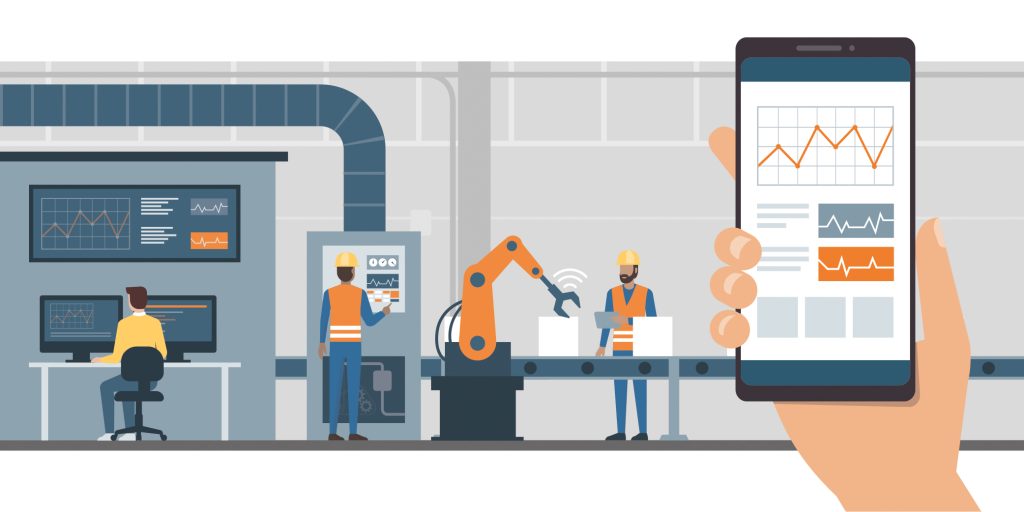
Eric C. Cosman, founder of OIT Concepts, shares top automation trends for 2022
April 25, 2022
By Manufacturing AUTOMATION
 PHOTO: elenabs/iStock / Getty Images Plus/Getty Images.
PHOTO: elenabs/iStock / Getty Images Plus/Getty Images. In recent times, supply chain risks, labour market inefficiencies and heightened geopolitical tensions and the tightened global operating environment have accelerated the transition towards smart manufacturing and adoption of Industry 4.0 technologies. Automation experts share their predictions on trends that professionals need to watch out for in 2022 and respond to accordingly.
Here are the predictions made by Eric C. Cosman, founder and principal consultant with OIT Concepts.
1. The value of open automation
In response to a push towards open process automation systems by several major asset owners, the Open Process Automation Forum (OPAF) has identified standards to accelerate the creation of open, interoperable, and secure automation architecture that addresses both technical and commercial challenges of current systems. Much of this architecture has now been defined and facilities have been established for testing the performance and operation of individual components and standards.
With the increasing acceptance of the general concepts associated with open automation systems, the emphasis must now shift to the demonstration of these concepts using practical examples and case studies. Attributes such as interoperability, performance and security can also be claimed by proprietary systems. So, it is critical to show that an open systems approach delivers these capabilities with more value to the asset owner.
2. Operations cybersecurity across sectors
Although there is still much to be done in securing automation systems, the standards and practices in this area have been improving for many years. Much of the initial effort was focused on specific industries. However, it is now evident that the fundamental concepts and practices are not sector-specific. As a result, there is now more interest in – and acceptance of – the idea of cross-sector standards that address the common elements of a cybersecurity program while bringing together the disciplines of information and automation security. The International Electrotechnical Commission (IEC) recently positioned IEC 62443 as a “horizontal standard,” encouraging their various committees to use these standards as a basis for their response.
This trend must continue as it moves the dialogue from the common or general requirements applicable in all situations to a more focused examination of the detailed practices required in specific industries. Individual sectors should develop profiles and recommended practices that interpret the fundamentals of effective cybersecurity using concepts, models and terminology that are most meaningful in their context.
3. Digitalization of engineering standards and practices
Traditionally, engineering standards and practices have taken the form of documents and related tools that define specific normative requirements with explanatory information and supporting rationale. This is an aging paradigm that does not meet the needs of current potential users and stakeholders. With the increased volume and complexity of information in these standards, it is essential to find better ways to deliver this information in a form that can be more easily applied.
Virtually all standards development organizations (SDO’s) are now pursuing strategies for the delivery of “electronic standards.” While the definition of this term is somewhat imprecise and may be inconsistent across organizations, the fundamental goals are basically the same. Requirements must be available in a form that allows for quantitative comparison of alternatives and the development of conformance specifications. There must also be tools and facilities for navigating the information and responding to various types of queries.
It is still not clear what form standards may take in the future, but it is apparent that simple narrative documents will no longer be sufficient.
4. Workforce development, expertise retention and leverage
Workforce development and the retention of key knowledge and skills have long been a significant challenge for automation and other engineering disciplines. This situation is expected to continue as older professionals retire and leave the workforce. Recent developments such as the global pandemic will likely only exacerbate this situation.
Consistent with the adage “Necessity is the mother of invention,” we can expect that socio-economic influences will drive additional innovation in this area. New approaches are required for the retention of key technical and expertise-related information and transferring that knowledge and expertise to developing professionals. At the same time, it will be essential to find ways to apply this knowledge more broadly and effectively across a wide range of applications. Automation cybersecurity is but one example of this need. In that case, simply linearly applying common practices on a case-by-case basis is highly unlikely to meet the demand in an acceptable timeframe.
5. Practical applications of digital twins
Digital twins have been a subject of intense interest in recent years. They have been described as augmenting artificial intelligence (AI), machine learning, and software analytics to create functional digital simulation models that reproduce physical assets and systems in a virtual space where designers can model the behaviour of various processes.
Just as with other “new things,” the time has come for this concept to demonstrate value from useful and practical applications. Examples include providing a clearer line of sight toward predictive maintenance, modelling the lifespan of a piece of equipment or system and providing manufacturers with the ability to model entire supply chains. While these and similar concepts sound compelling in the abstract, there must be proven cases where their application delivers significant benefit with an acceptable level of effort and cost. Without such examples, such concepts remain somewhat theoretical.
 Eric C. Cosman is the founder and principal consultant with OIT Concepts. He has served as the vice-president of standards and practices and executive board member at the International Society for Automation (ISA) and was the society president for 2020. He is currently co-chair of the ISA99 committee on industrial automation and control systems security.
Eric C. Cosman is the founder and principal consultant with OIT Concepts. He has served as the vice-president of standards and practices and executive board member at the International Society for Automation (ISA) and was the society president for 2020. He is currently co-chair of the ISA99 committee on industrial automation and control systems security.
Read the full article in the March/April 2022 issue of Manufacturing AUTOMATION.
Advertisement
- Eplan to host Virtual Fair 2022 in May
- CME extends service offerings to strengthen manufacturing with Ontario government support